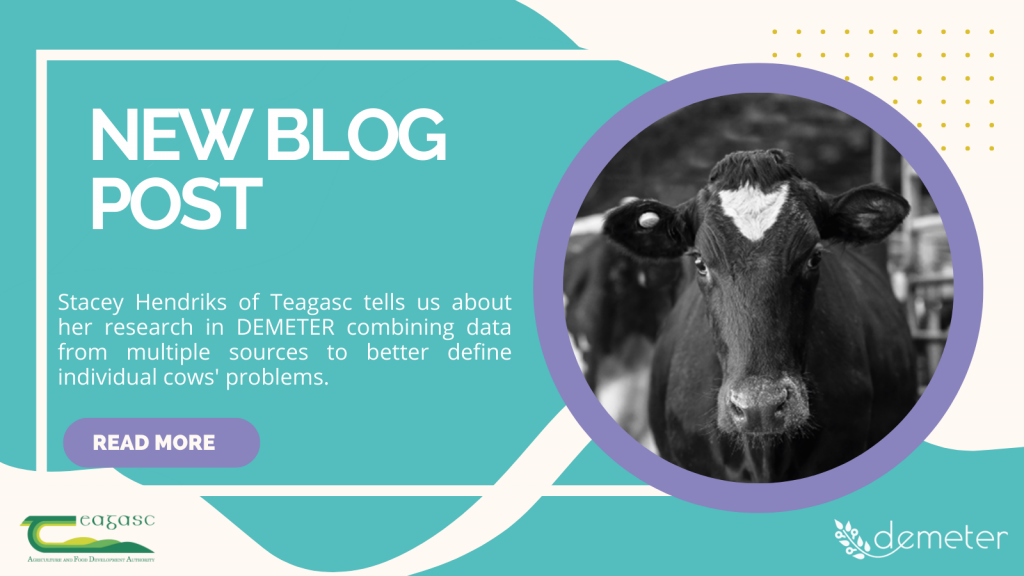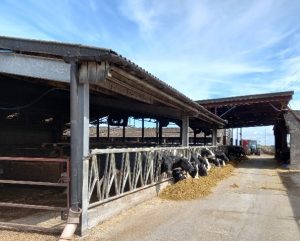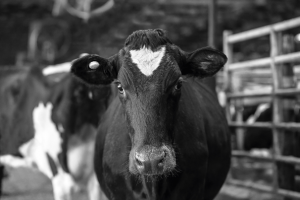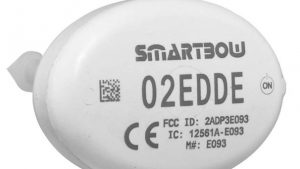
In our latest blog we chat to Stacey Hendriks, a postdoctoral researcher with Teagasc and involved in the DEMETER pilot ‘Proactive Milk Quality Control’. Stacey tells us about her background and the work she is undertaking in DEMETER.
Can you tell us a bit about yourself and your research background?
I am a postdoctoral researcher with an academic background in dairy cow behaviour, health, and welfare. I have an interest in the practical application of precision technologies on dairy farms and have been involved in several projects using wearable behaviour-monitoring devices fitted to dairy cows. Projects I have contributed to have studied how a dairy cows’ behaviour relates to her overall health. By understanding the links between behaviour and health we have the potential to use wearable behaviour-monitoring technologies to better predict, prevent, and identify sick cows. This is important to improve their welfare and lifetime productivity.
Health management is an important aspect of successful dairy farming and farmers have traditionally relied on their animal husbandry skills to observe and identify animals that are unwell. Over the last decade, herd sizes have increased and continue to increase in many countries. Consequently, farmers sometimes need to hire additional staff to assist with on-farm tasks (Barkema et al., 2015). In these situations, staff may be less trained in animal husbandry and animal care and have limited time to monitor individual cows. As a result, farmers are increasingly adopting technologies to support dairy cow health management (Rutten et al., 2013). One example is the use of wearable behaviour-monitoring technologies.
Wearable behaviour-monitoring devices can be fitted to a cow through ear tags, leg bands, or neck-worn collars and gather large amounts of data from individual cows. There are a range of behaviour-monitoring devices on the market and they allow the monitoring of activity, and rumination and lying time. The data that these devices can provide may be of value to improve cow health management. However, we must support farmers to interpret and utilise the information to allow these tools to have real impact on farms.

Newly calved cows on the commercial farm where the data was collected.
What research are you undertaking in DEMETER?
Dairy cows alter their behaviour when they are unwell and many behaviour-monitoring devices will alert a farmer to these abnormal changes. But, the alerts are often not specific to a problem and require farmers to interpret the results from the sensor themselves. Therefore, a lack of training of farmers and advisors in how to utilise this information means the data is underutilised as reported by Barkema et al., 2015. Further, farmers routinely record other information about cow health and milk quality and many have digitalised records, but few programmes combine the behaviour data with other routinely collected data (Rutten et al., 2013). This is a missed opportunity to combine data from multiple sources to better define individual cows’ problems and support farmers to make actionable decisions on-farm.
The aim of Pilot 4.3 is to integrate non-sensor information that is routinely recorded on dairy farms with information from commercially available and new sensors to identify sick cows. Non-sensor information will include cow health management (recorded health problems and treatments), cow history (age, breed, and calving difficulties), milk quality (milk yield, somatic cell counts, and fat and protein content), and weather data (humidity, temperature, rainfall). Sensor information will include ruminating, lying, and activity behaviours alongside data from indicators of illness detected in milk.

Dairy cow fitted with SMARTBOW ear tag behaviour monitor.
What partners are involved in the research?
We (Teagasc, Ireland) are partnering with four other groups to undertake this work. Firstly, Zoetis is providing dairy cow behaviour data through their commercially available SMARTBOW ear tag (Zoetis, 2021). Secondly, we are working alongside Tyndall (Tyndall National Institute, Cork, Ireland) to develop new sensors that could allow specific indicators of illness to be detected in milk. The Walton Institute (Ireland) is involved in creating a dashboard where sensor and non-sensor information will be integrated to identify dairy cows experiencing health problems. Finally, the data for the project is being collected on a commercial dairy farm in the UK by a dairy farmer (Anthony Gothard) and his experienced farm staff.

SMARTBOW ear tag
How will your research help the project and the wider agricultural sector?
We foresee that the integration of additional information in a dairy health monitoring platform can provide improved real-time monitoring of the health of dairy cows. Early and accurate identification of health problems in dairy cows has the potential to improve health and welfare on farms. Providing specific information about dairy cow health will support farmers to make decisions about intervening and treating health problems and as a result improve dairy cow health and welfare. In the future, integrated dairy cow health management platforms may support the development of objective animal-based measures of health and welfare that could be used in dairy cow welfare auditing programmes.
References
Barkema, H. W., M. A. G. von Keyserlingk, J. P. Kastelic, T. J. G. M. Lam, C. Luby, J. P. Roy, S. J. LeBlanc, G. P. Keefe, and D. F. Kelton. 2015. Invited review: Changes in the dairy industry affecting dairy cattle health and welfare. Journal of Dairy Science 98:7426-7445.
Rutten, C. J., A. G. J. Velthuis, W. Steeneveld, and H. Hogeveen. 2013. Invited review: sensors to support health management on dairy farms. Journal of Dairy Science 96:1928-1952.
Zoetis (2021). SMARTBOW: The most advanced dairy cow monitoring system. https://www.smartbow.com/en/home.aspx (accessed on 15 August 2022).


